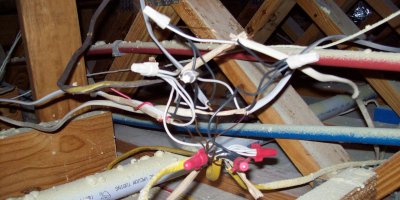OK, but what evidence do we have that the degradation is moisture related, as opposed to just age or heat related? Finding 50+ year old degraded wiring is not so unusual, everything has a life span.
My current thinking on this matter is that a building generally has 4 control layers: bulk water, air, water vapor, and thermal. And that only the bulk water control layer matters for determining whether a location is dry, damp, or wet due to weather. [A porous leaky basement wall could cause damp conditions due to ground water, and wash down activities could cause a damp or wet location inside a building.]
Also, on this question of condensation, it is certainly conceivable that a ventilated, unconditioned space could end up below the dew point of outside air, so that humid air entering the space will lead to condensation. But what I'm not clear on what combination of normal weather conditions and normal building practices would lead to this occurring to sufficient degree to yield a damp location. ["A location classified as dry may be temporarily subject to dampness or wetness,"]
For new construction, concerns like this help tilt the balance towards sealed attics and sealed crawl spaces, at least for me.
Thanks, Wayne

